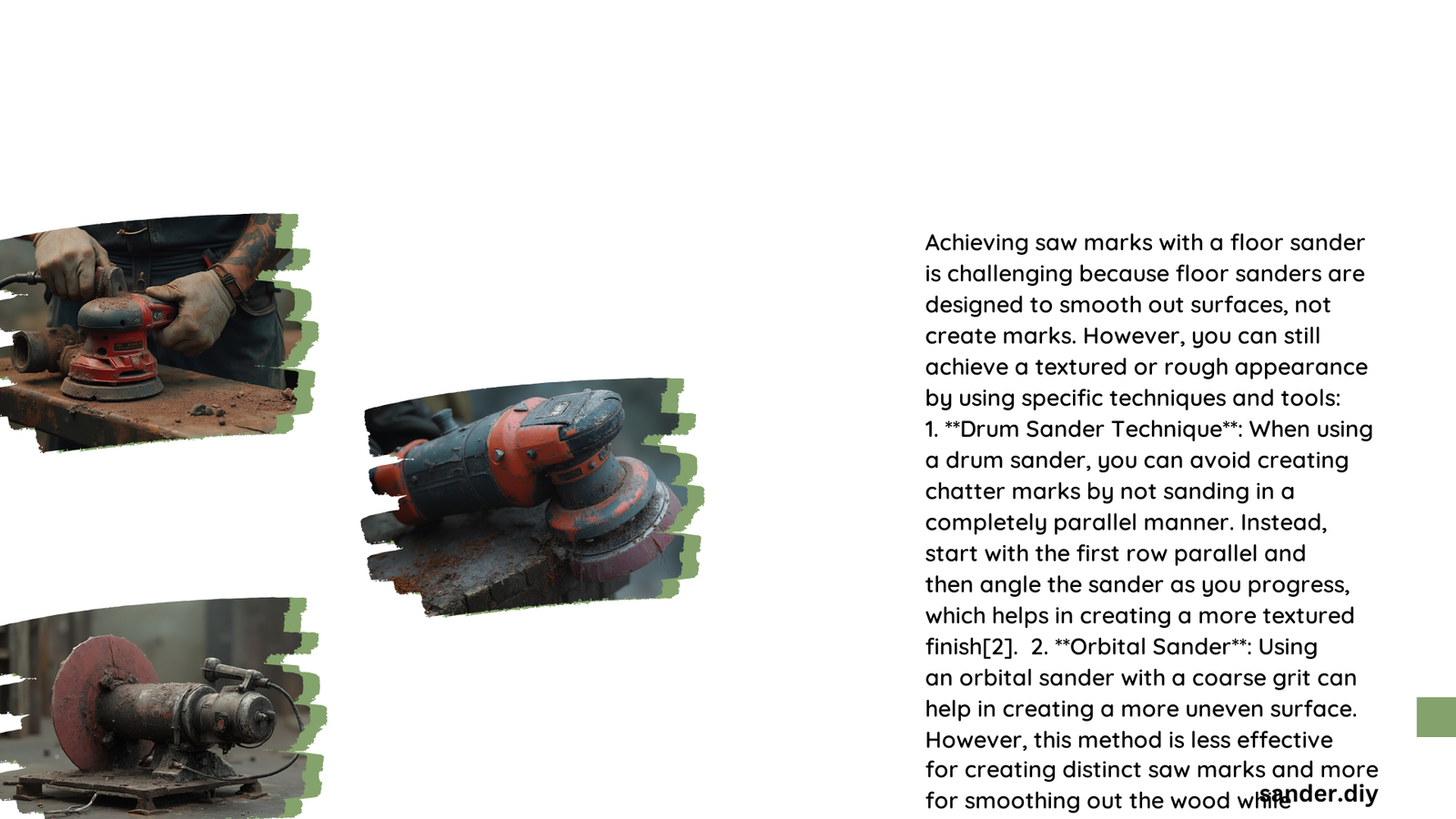Floor sanding is a delicate process that requires precision and understanding of wood surfaces. While intentionally creating saw marks is not recommended, professional woodworkers and DIY enthusiasts often encounter challenges in achieving a smooth, uniform finish. This comprehensive guide explores the nuanced techniques, potential pitfalls, and expert strategies for managing sanding marks on hardwood floors.
What Causes Saw Marks During Floor Sanding?
Saw marks emerge from multiple technical factors during the wood refinishing process. These imperfections typically result from:
- Incorrect sander operation
- Inappropriate sandpaper grit selection
- Inconsistent pressure application
- Misalignment with wood grain direction
How Do Professional Woodworkers Prevent Saw Marks?
Professionals employ strategic techniques to minimize unwanted sanding marks:
- Grain Alignment Technique
- Always sand parallel to wood grain
- Maintain consistent movement direction
-
Use overlapping passes for uniform coverage
-
Progressive Grit Strategy
| Grit Level | Purpose | Recommended Technique |
|———–|———|———————-|
| 36-60 | Rough removal | Initial surface preparation |
| 80-100 | Medium smoothing | Intermediate leveling |
| 120-150 | Fine finishing | Final surface refinement |
What Equipment Minimizes Sanding Marks?
Selecting appropriate sanding equipment significantly impacts mark prevention:
- Drum Sanders: High-power, professional-grade
- Best for large, flat surfaces
- Requires expert handling
-
Potential for deep gouges if misused
-
Orbital Sanders: Precision and control
- Gentler surface interaction
- Reduced risk of aggressive marking
- Ideal for final smoothing stages
Can Wood Type Influence Sanding Marks?
Different wood species respond uniquely to sanding:
- Hardwoods (Oak, Maple)
- More resilient
- Tolerant of multiple sanding passes
-
Consistent grain structure
-
Softwoods (Pine, Cedar)
- More susceptible to marking
- Require gentler sanding techniques
- Higher risk of visible imperfections
Advanced Sanding Mark Prevention Strategies

Pressure and Movement Techniques
- Maintain light, consistent pressure
- Use smooth, continuous motion
- Avoid sudden stops or jerky movements
- Keep sander flat and level
Lighting and Inspection Protocol
- Use bright, angled lighting during sanding
- Inspect surface after each grit progression
- Clean surface thoroughly between passes
- Check for remaining marks or inconsistencies
Common Mistakes to Avoid
- Skipping intermediate grit levels
- Applying excessive downward force
- Sanding against wood grain
- Using worn-out sandpaper
- Neglecting dust removal
Cost Considerations
| Sanding Equipment | Price Range | Recommendation |
|---|---|---|
| Professional Drum Sander | $500-$1500 | For serious woodworkers |
| Rental Drum Sander | $50-$100/day | DIY project option |
| Orbital Sander | $100-$300 | Home workshop essential |
Final Recommendations
While achieving intentional saw marks is not advisable, understanding their formation helps prevent undesirable results. Professional-grade results demand patience, proper technique, and systematic approach.
Reference:
– Wood Flooring Sanding Techniques
– Professional Hardwood Finishing Guide
– Advanced Woodworking Methods
